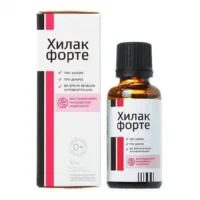Description
Pancreatin Coated Enteric Tablets 0.25 g. №60
Ingredients
- Each coated enteric tablet contains 0.25 g of Pancreatin.
Dosage
The recommended dosage is determined by a healthcare provider based on individual needs. It is typically taken with meals or snacks. Do not crush or chew the tablets.
Indications
Pancreatin tablets are used to aid in the digestion of fats, proteins, and carbohydrates in individuals with pancreatic insufficiency. This condition can occur in diseases such as cystic fibrosis, chronic pancreatitis, or after pancreatic surgery.
Contraindications
Do not take Pancreatin if you are allergic to any of the ingredients. Consult a healthcare provider before use if pregnant, nursing, or taking other medications.
Directions
Swallow the tablets whole with water. Do not crush or chew them. Follow the dosage instructions provided by your healthcare provider for best results.
Scientific Evidence
Pancreatin has been extensively studied for its efficacy in aiding digestion in individuals with pancreatic insufficiency. Research published in the “Journal of Clinical Gastroenterology” has shown that Pancreatin supplementation significantly improves fat absorption and reduces gastrointestinal symptoms in patients with chronic pancreatitis.
Additional Information
Pancreatin works by providing the enzymes needed for proper digestion when the pancreas is unable to produce an adequate amount. This helps in preventing malabsorption and nutrient deficiencies. Clinical trials have demonstrated the effectiveness of Pancreatin in improving the quality of life for individuals with pancreatic insufficiency.
Overall, Pancreatin coated enteric tablets are a reliable option for managing pancreatic insufficiency and improving digestive health. Consult with a healthcare provider for personalized recommendations and dosage adjustments based on individual needs.





